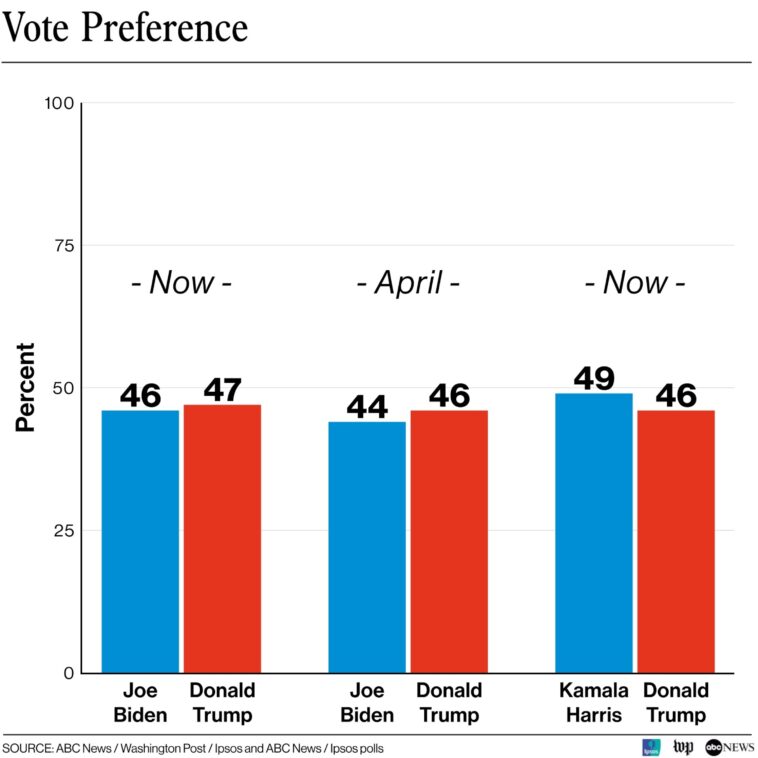Recent polls indicate a significant decline in public approval of the policies implemented by President Trump, covering a wide range of issues from military decisions to economic agendas. Trump’s ‘Big Beautiful Bill’ stance has also failed to receive support from the majority of the American public. This information was released after Trump’s reappearance in the East Room of the White House in Washington, D.C., on June 26, 2025.
Data from the past months suggests that President Trump is losing favor with voters. In recent surveys conducted this month, the president is shown to be suffering a precipitous drop in approval ratings, with some polls recording the lowest figures of his second tenure. These polls include numerous prestigious and reputable institutes, providing a considerable indication of public sentiment.
One such poll from Quinnipiac University, carried out between June 5th and 9th, unveiled that a mere 38 percent of American citizens approved Trump’s presidential performance, while the disapproval figure stood at a substantial 54 percent. This translates to a negative 16-point job performance rating, indicating clear dissatisfaction with his work.
An additional poll by Economist/YouGov presented a similar charge—40 percent approval versus 54 percent disapproval, rendering a negative 14-point rating, the lowest since the president’s inauguration. More damaging data came from two other studies that revealed the most considerable disapproval numbers of Trump’s second term.
An earlier Gallup poll presented Trump’s job performance score at a negative 17 points, while the findings of a survey from Bullfinch Group showed a rating of negative 13 points. However, aggregate polling data from RealClearPolitics paints a somewhat less daunting picture for the president, despite conveying an overall negative image.
According to RealClearPolitics, which combines data from various sources, Trump’s approval rates aren’t at their lowest point ever. However, as of the last statistical capture on Thursday, the average poll rating pointed to a net negative 4.1 points. This is a deterioration from the previous month’s score of negative 2.3 points.
Trump started his second tenure with a positive 3.5 point job performance rating in early February. However, since then, the average polling figure skewed unfavorably by 7.6 points in a negative direction. This shift in public sentiment happens in the backdrop of growing concerns and disagreements with the Trump administration’s handling of various issues, including foreign policy and domestic economic strategies.
Trump’s decision to order airstrikes on several Iranian locations last weekend faced significant criticism. According to a poll by Reuters/Ipsos, only 36 percent of Americans approved of the act, while 45 percent voiced their dissent. The study also revealed that almost 84 percent of the populace fears the conflict between Iran and Israel might get amplified due to U.S. interference.
Moreover, there seems to be weakening public support for Trump’s primary stand—immigration—as widespread arrests against immigrants spread across the country. A notable number of Americans disapprove of Trump’s reaction to protests in Los Angeles against ICE raids. Various polls indicate resentment against deploying the Marine forces and National Guard units to quell these protests.
One such poll presented disapproval numbers for military intervention at 47 percent and favourability at only 34 percent regarding Trump’s decision to send Marine forces to LA. Similarly, 45 percent of respondents disapproved of using the National Guard, with only 38 percent supporting it. Public opinion also turned against Trump’s Army parade, which was meant to commemorate the military branch’s anniversary coincidentally falling on Trump’s birthday.
A report from PRRI suggests that as high as 76 percent of Americans opposed this celebratory parade, while a marginal 21 percent expressed their approval. The economic policies of the current administration, particularly the unstable tariff regime, is another area reflecting public disapproval.
According to an NBC News Decision Desk study, 60 percent of the public disagreed with Trump’s decision to impose substantial tariffs only to decrease them later but remain in place. The Quinnipiac poll also noted that Americans don’t find the so-called ‘One Big Beautiful Bill’ appealing, with the 53 percent expressing opposition and only 27 percent showing support.
Furthermore, a significant part of the American public particularly criticized the proposal for massive Medicaid reductions under this bill. A KFF poll from March revealed that merely 17 percent of Americans agreed with slashing Medicaid funds. In contrast, 40 percent preferred the funding to remain the same, and 42 percent would like to see increased funding.
Despite declining public approval, Trump may not be as concerned due to Republican majorities in both the Senate and the House, and a conservative-leaning Supreme Court. Given he is unable to run for a third term under the current laws, despite suggestions hinting at such intentions, the immediate impact of these polls on him might be limited.
However, if the steady stream of negative numbers persists, this could reflect poorly on the Republican Party’s prospects of retaining control of Congress in upcoming elections. Consequently, this could compel Republicans to distance themselves from certain issues that are proving unpopular with the public. Current predictions hint at Democrats having a slight edge over Republicans in the upcoming 2026 elections based on an average generic congressional ballot question.

